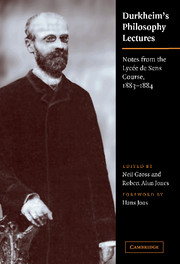Book contents
- Frontmatter
- Contents
- Foreword
- Translators' Note
- Acknowledgments
- Introduction
- Part I Preliminary Matters
- Part II Psychology
- 5 The Object and Method of Psychology
- 6 Faculties of the Soul
- 7 On Pleasure and Pain
- 8 The Inclinations
- 9 The Emotions and Passions
- 10 Theory of Knowledge
- 11 External Perception and Its Conditions. The Senses
- 12 External Perception. The Origin of the Idea of Externality
- 13 External Perception. On the Objectivity of the Idea of Externality. (1) Does the External World Exist?
- 14 External Perception. On the Objectivity of the Idea of Externality. (2) On the Nature of the External World
- 15 Consciousness. On the Conditions of Consciousness
- 16 Consciousness. On the Origin of the Idea of the Self
- 17 Consciousness. On the Nature of the Self
- 18 Reason. The Definition of Reason
- 19 Reason. The Material of Reason. (1) Principles of Reason
- 20 Reason. The Material of Reason (2) Rational or First Ideas
- 21 Reason. Empiricism
- 22 Reason. Evolutionism. The Theory of Heredity
- 23 Reason. On the Objectivity of Rational Principles
- 24 Faculties of Conception. On the Association of Ideas
- 25 Faculties of Conception. Memory
- 26 Faculties of Conception. Imagination
- 27 Faculties of Conception. Sleep. Dreams. Madness
- 28 Complex Operations of the Mind. Attention. Comparison. Abstraction
- 29 Complex Operations of the Mind. Generalization. Judgment. Reasoning
- 30 The Object and Method of Aesthetics
- 31 What Is Beauty?
- 32 Prettiness and the Sublime. Art
- 33 On Activity in General. Instinct
- 34 Habit
- 35 On the Will and on Freedom
- 36 On Freedom (Continued). Psychological Determinism
- 37 On Freedom (Conclusion). Scientific Determinism. Theological Fatalism
- Part III Logic
- Part IV Ethics
- Part V Metaphysics
- Appendix: Biographical Glossary
- Index
11 - External Perception and Its Conditions. The Senses
Published online by Cambridge University Press: 21 October 2009
- Frontmatter
- Contents
- Foreword
- Translators' Note
- Acknowledgments
- Introduction
- Part I Preliminary Matters
- Part II Psychology
- 5 The Object and Method of Psychology
- 6 Faculties of the Soul
- 7 On Pleasure and Pain
- 8 The Inclinations
- 9 The Emotions and Passions
- 10 Theory of Knowledge
- 11 External Perception and Its Conditions. The Senses
- 12 External Perception. The Origin of the Idea of Externality
- 13 External Perception. On the Objectivity of the Idea of Externality. (1) Does the External World Exist?
- 14 External Perception. On the Objectivity of the Idea of Externality. (2) On the Nature of the External World
- 15 Consciousness. On the Conditions of Consciousness
- 16 Consciousness. On the Origin of the Idea of the Self
- 17 Consciousness. On the Nature of the Self
- 18 Reason. The Definition of Reason
- 19 Reason. The Material of Reason. (1) Principles of Reason
- 20 Reason. The Material of Reason (2) Rational or First Ideas
- 21 Reason. Empiricism
- 22 Reason. Evolutionism. The Theory of Heredity
- 23 Reason. On the Objectivity of Rational Principles
- 24 Faculties of Conception. On the Association of Ideas
- 25 Faculties of Conception. Memory
- 26 Faculties of Conception. Imagination
- 27 Faculties of Conception. Sleep. Dreams. Madness
- 28 Complex Operations of the Mind. Attention. Comparison. Abstraction
- 29 Complex Operations of the Mind. Generalization. Judgment. Reasoning
- 30 The Object and Method of Aesthetics
- 31 What Is Beauty?
- 32 Prettiness and the Sublime. Art
- 33 On Activity in General. Instinct
- 34 Habit
- 35 On the Will and on Freedom
- 36 On Freedom (Continued). Psychological Determinism
- 37 On Freedom (Conclusion). Scientific Determinism. Theological Fatalism
- Part III Logic
- Part IV Ethics
- Part V Metaphysics
- Appendix: Biographical Glossary
- Index
Summary
External perception is the faculty by which the external world becomes known to us. The external world begins where the world of consciousness ends.
In order for external perception to take place, three conditions must be met:
Some object must be in our vicinity. This seems obvious, but perception sometimes occurs even in the absence of an object. This is called a hallucination.
Certain physiological conditions must be fulfilled. Again, there are three: The object must come to the attention of a sensory organ; the nervous stimuli generated must be transmitted through the body; and this transmission must reach the brain.
The self must intervene. Sensory stimuli are multiple and diverse, and unified perceptions occur only through the intervention of the self.
Of these three conditions, here we'll study only one – the relationship between the object and the senses. We won't concern ourselves with the existence of the object or the intervention of the self. Instead, we'll focus on the organs – called senses – that mediate between objects and the brain.
Five senses are typically recognized: touch, smell, taste, sight, and hearing. But it's important not to restrict the word “senses” just to the sensory organs that are the intermediaries between the external world and the self. We define the word more broadly as “sources of information about the external world” because there are some senses that aren't localized. Two senses – known to us only recently – are not associated with a specific organ.
- Type
- Chapter
- Information
- Durkheim's Philosophy LecturesNotes from the Lycée de Sens Course, 1883–1884, pp. 73 - 76Publisher: Cambridge University PressPrint publication year: 2004



